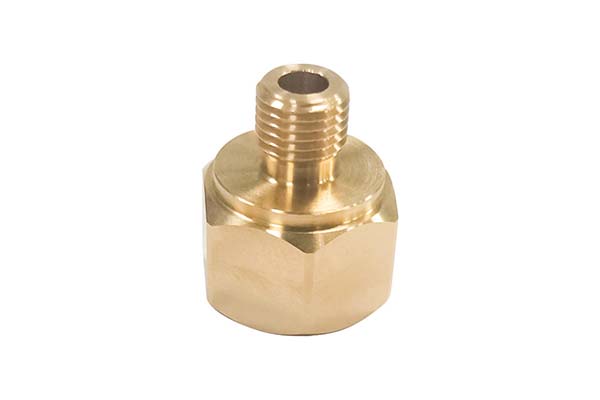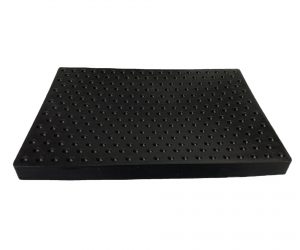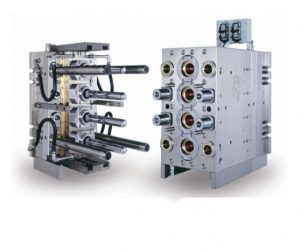1. Introduction to Prototyping Companies
1.1 What Are Prototyping Companies?
Prototyping companies play a pivotal role in the product development ecosystem. These are specialized entities that focus on the creation of physical or digital models, commonly known as prototypes, of products. The process involves taking a concept, whether it's a brand - new consumer gadget, a medical device, or an industrial component, and translating it into a tangible or virtual representation.
They are equipped with a diverse range of advanced technologies. 3D printing, also known as additive manufacturing, is one of the most prominent. It works by layering materials, such as plastics, metals, or even ceramics, based on a digital model to build the prototype. CNC (Computer Numerical Control) machining, on the other hand, is subtractive. It starts with a block of material, like aluminum or steel, and uses precise computer - controlled cutting tools to carve out the desired shape. Rapid tooling is another technique, which enables the quick production of molds or dies used in manufacturing processes like injection molding, allowing for the efficient production of multiple prototype parts.
2. Key Factors to Evaluate Prototyping Companies
2.1 Technical Capabilities
Technology Offerings
When evaluating prototyping companies, one of the first aspects to consider is their technology offerings. Three common and widely - used technologies in the prototyping field are 3D printing, CNC machining, and vacuum casting, each with its own unique characteristics.
3D Printing
3D printing, also known as additive manufacturing, has several sub - technologies. Two of the most popular are Fused Deposition Modeling (FDM) and Stereolithography (SLA). FDM works by melting a thermoplastic filament and extruding it layer by layer to build the prototype. It is relatively cost - effective and suitable for creating large - scale prototypes or those with less complex geometries. For example, if a startup is developing a concept for a new outdoor furniture piece, an FDM 3D printer can quickly produce a full - scale model using materials like ABS or PLA. These materials are affordable and easy to work with, allowing the startup to test the overall design and functionality, such as the stability and ergonomics of the furniture, without a large investment.
On the other hand, SLA uses a laser to cure a liquid photopolymer resin layer by layer. This results in a much higher - resolution prototype with smoother surfaces, making it ideal for creating highly detailed and complex parts. For instance, in the jewelry industry, SLA 3D printing can be used to create intricate jewelry prototypes with fine details, such as delicate filigree patterns. These prototypes can then be used for design approval, and the final product can be produced through traditional casting methods.
CNC Machining
CNC machining is a subtractive manufacturing process. It starts with a solid block of material, such as metal (aluminum, steel) or plastic, and uses computer - controlled cutting tools to remove material and shape the prototype. CNC machining offers high precision and is well - suited for creating prototypes that require tight tolerances and high - strength materials. In the automotive industry, when developing a new engine component, CNC - machined prototypes can accurately replicate the final part's dimensions and material properties. This allows engineers to conduct real - world performance tests, such as stress and heat resistance tests, on the prototype to ensure the design's viability before mass production.
Vacuum Casting
Vacuum casting is a process used to create small - batch prototypes with high - quality surface finishes. It involves creating a silicone mold from a master pattern and then casting liquid resin into the mold under vacuum conditions. This process is often used when the prototype needs to closely mimic the look and feel of the final product, such as in the consumer electronics industry. For example, when a company is developing a new smartphone, a vacuum - cast prototype can be made to have the exact same shape, texture, and even some functional features (like button placement and feel) as the final product. This helps in market testing, as consumers can interact with the prototype in a more realistic way, providing valuable feedback on the product's design and usability.
A comparison of these technologies in terms of key factors such as cost, speed, and precision can be seen in the following table:
| Technology | Cost (Low - High) | Speed (Slow - Fast) | Precision (Low - High) | Ideal for |
| FDM 3D Printing | Low | Slow - Medium | Low - Medium | Large - scale, less complex prototypes |
| SLA 3D Printing | Medium - High | Medium | High | Highly detailed, complex parts |
| CNC Machining | High | Slow | High | High - tolerance, high - strength parts |
| Vacuum Casting | Medium | Medium - Fast | High | Small - batch, high - quality surface finish prototypes |
Material Expertise
Another crucial aspect of a prototyping company's technical capabilities is its material expertise. A company that can handle a wide range of materials, including metals, polymers, and biocompatible materials, offers more versatility.
Metals
Metals are often used in prototyping for applications that require high strength, durability, and heat resistance. Aluminum is a popular choice due to its low density and good corrosion resistance. It is commonly used in aerospace and automotive prototyping. For example, in the development of an aircraft engine cowling, an aluminum prototype can be fabricated to test its aerodynamic performance and structural integrity. Stainless steel, on the other hand, is known for its high strength and corrosion resistance, making it suitable for prototypes in the medical and food processing industries. A prototyping company with expertise in metalworking can handle various metal - forming processes, such as milling, turning, and forging, to create high - quality metal prototypes.
Polymers
Polymers are widely used in prototyping because of their versatility, low cost, and ease of processing. Materials like ABS (Acrylonitrile Butadiene Styrene) are commonly used in 3D printing and injection molding for creating consumer product prototypes. They are strong, durable, and have good aesthetic properties. Polycarbonate is another popular polymer known for its high impact resistance, making it suitable for applications such as protective gear prototypes. A prototyping company that can work with different types of polymers can help clients achieve the desired mechanical and physical properties in their prototypes.
Biocompatible Materials
In the medical field, biocompatible materials are essential for prototyping implants, prosthetics, and medical devices. Materials like titanium and certain types of plastics are biocompatible and can be used to create prototypes that are safe for human use. For example, when developing a new dental implant, a prototyping company needs to work with biocompatible materials to ensure that the prototype accurately represents the final product in terms of its interaction with the human body. A company with expertise in biocompatible materials will also be familiar with the strict regulatory requirements associated with medical device prototyping.
2.2 Industry Experience
Case Studies
A prototyping company's industry experience is a strong indicator of its capabilities. Case studies can provide valuable insights into a company's domain knowledge. For example, a prototyping company that has worked on automotive projects can demonstrate its understanding of the unique requirements of the automotive industry. In automotive prototyping, factors such as safety, durability, and aerodynamics are of utmost importance. A case study might show how the company developed a prototype for a new car bumper. They would have to consider the impact resistance requirements, as well as the aesthetic and aerodynamic design. By using advanced simulation tools and their knowledge of materials, they could optimize the design to meet all these criteria.
In the aerospace industry, the requirements are even more stringent. A prototyping company with aerospace experience would be familiar with the use of lightweight yet high - strength materials, such as carbon fiber composites. They would also understand the importance of precise manufacturing tolerances to ensure the safety and performance of aircraft components. A case study could involve the development of a prototype for an aircraft wing component. The company would need to work closely with aerospace engineers to design and fabricate a prototype that can withstand the extreme forces and environmental conditions experienced during flight.
In the medical field, a prototyping company's experience can be demonstrated through case studies of developing medical device prototypes. For instance, when developing a prototype for a new surgical instrument, the company would need to consider factors such as sterilizability, ergonomics, and biocompatibility. They would also need to comply with strict regulatory standards, such as those set by the FDA in the United States. A case study could show how the company navigated these challenges to create a successful prototype.
2.3 Quality Assurance
Certifications
Certifications are an important measure of a prototyping company's quality assurance. ISO 9001 is a widely recognized international standard for quality management systems. A prototyping company with ISO 9001 certification has demonstrated its commitment to quality in all aspects of its operations, from design to production and delivery. This certification ensures that the company has established processes for quality planning, control, and improvement.
Testing Protocols
In - house testing protocols are another important aspect of quality assurance. A prototyping company should have the ability to conduct various types of tests on prototypes. Stress testing can be used to determine the maximum load a prototype can withstand before failure. For example, in the development of a new bridge support prototype, stress testing can simulate the real - world forces the support will experience, such as the weight of the bridge and the impact of traffic.
Thermal testing is important for prototypes that will be exposed to different temperatures. In the automotive industry, components like engine parts need to withstand high temperatures. A prototyping company can conduct thermal testing to ensure that the prototype can function properly under extreme heat conditions.
Ergonomic testing is crucial for products that are designed for human use, such as office furniture or handheld devices. This type of testing ensures that the product is comfortable and easy to use. For example, when prototyping a new computer mouse, ergonomic testing can involve having users of different hand sizes and shapes test the mouse to gather feedback on its comfort and usability.
2.4 Communication & Collaboration
Transparency
Transparency is key in the relationship between a client and a prototyping company. A good prototyping company will provide regular updates on the progress of the prototype development. This can include sharing design revisions, production timelines, and any potential issues that may arise. For example, if there are delays due to material shortages or equipment malfunctions, the company should communicate this to the client as soon as possible. Clear reporting can be in the form of detailed progress reports, regular meetings, or online project management tools that allow the client to track the project's status in real - time.
Design Support
The ability of a prototyping company's engineers to provide design support is also important. They should be able to offer feedback on the manufacturability of the design. For instance, if a client's design has features that are difficult or expensive to produce using the available prototyping technologies, the company's engineers can suggest alternative designs or manufacturing methods. This collaborative approach helps to ensure that the final prototype not only meets the client's design requirements but is also cost - effective and can be produced within the given time frame.
3. Comparative Analysis of Prototyping Companies
3.1 Sample Table: Top Prototyping Companies
When choosing a prototyping company, it's crucial to compare different options based on several key factors. Here is a sample table comparing three well - known prototyping companies, including Yigu Technology, to give you a better understanding of their capabilities:
| Company Name | Specialized Prototyping Area | Average Lead Time | Cost Range | Key Technologies Used |
| Yigu Technology | Complex mechanical prototypes | 5–10 days | \(1k–\)10k | CNC machining, 3D printing |
| ProtoLabs | Rapid injection molding | 3–7 days | \(3k–\)15k | Digital manufacturing |
3.2 How to Use This Table
Lead Time
The lead time, or the time it takes for the prototyping company to deliver the prototype, is a critical factor, especially if you have a tight project schedule. If your project is time - sensitive and you need a prototype quickly, ProtoLabs might be a better choice with its average lead time of 3 - 7 days. For example, if you are a startup in the consumer electronics industry and you want to quickly test a new product concept at an upcoming trade show, a shorter lead time is essential. However, if your project has a more flexible timeline, Yigu Technology's 7 - 14 - day lead time might be acceptable, especially if their expertise in complex mechanical prototypes aligns with your project requirements.
Cost Range
Cost is another significant consideration. The cost range in the table gives you an idea of the investment required. If you are a small - scale startup with a limited budget, Yigu Technology, with its cost range of \(1k - \)10k, might be more appealing, especially for creating customized consumer goods prototypes. But if your project demands high - precision and high - quality prototypes for complex mechanical components, and cost is not the most restrictive factor,
Technology
The key technologies used by each company also play a vital role in the decision - making process. Yigu Technology's use of CNC machining and 3D printing makes it suitable for projects that require a combination of high - precision subtractive manufacturing and the flexibility of additive manufacturing. For instance, if you are developing a new automotive engine component that needs to have precise dimensions (which can be achieved through CNC machining) and some complex internal geometries (which can be created using 3D printing), Yigu Technology would be a good fit.
ProtoLabs' focus on digital manufacturing, which includes rapid injection molding, is ideal for projects that require the production of multiple prototype parts with high - quality surface finishes. This is often the case in the consumer goods industry, where the look and feel of the product are crucial.
4. Conclusion
Selecting the right prototyping company is critical to product success. As we've explored, there are numerous factors to consider, each playing a pivotal role in the overall outcome of your project. Technical capabilities, industry experience, quality assurance, and communication & collaboration are all fundamental aspects that can't be overlooked.
Technical expertise in areas such as 3D printing, CNC machining, and material handling can make or break a prototype. The right technology and material choices can ensure that your prototype accurately represents your final product in terms of functionality, durability, and aesthetics. Industry experience, demonstrated through case studies and portfolio diversity, provides invaluable insights into the unique requirements of different sectors. This experience allows prototyping companies to anticipate challenges and find innovative solutions.
Quality assurance, backed by certifications and rigorous testing protocols, guarantees that the prototype meets high - standards of quality. This not only gives you confidence in the product but also helps in avoiding costly rework down the line. Transparent communication and effective collaboration between you and the prototyping company are essential for a smooth - running project. Regular updates, design support, and the ability to work together towards a common goal can lead to a better - designed and more successful prototype.


